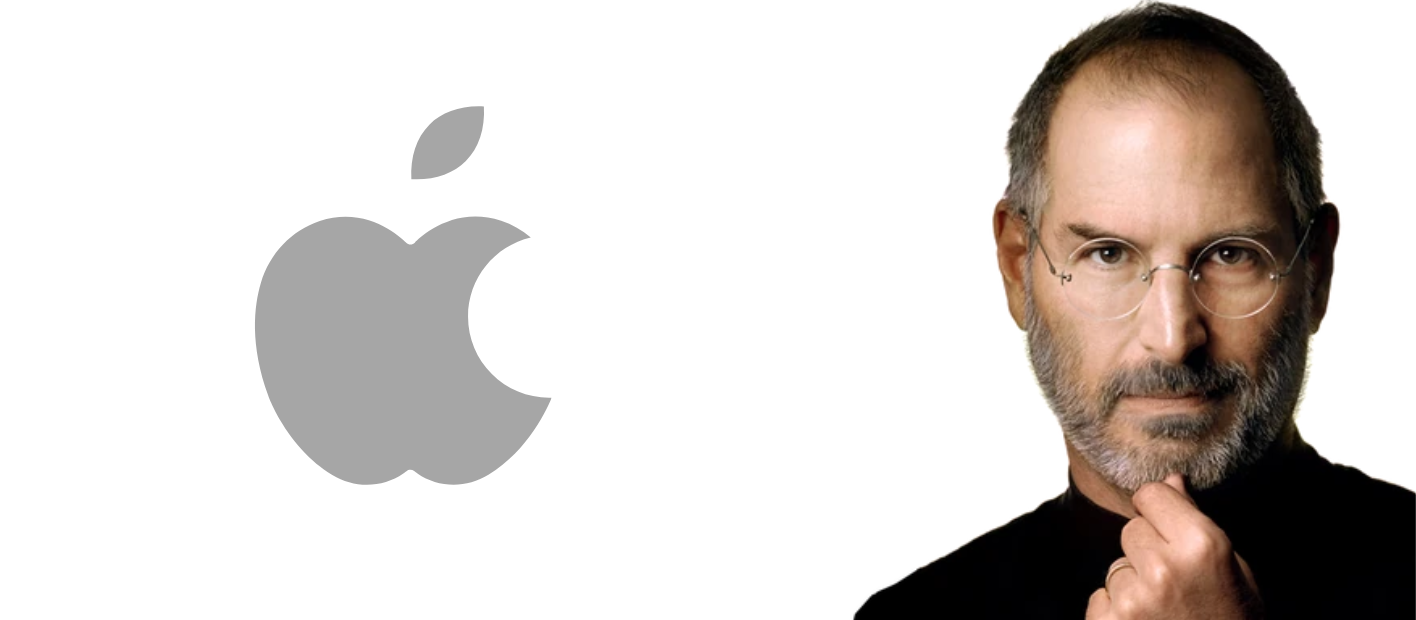Steve Jobs’ Legacy: Revolutionizing Technology and Creativity through Innovation
Introduction
Steve Jobs, the co-founder of Apple Inc., wasn’t just a tech enthusiast; he was a visionary who forever changed the way we interact with technology. From transforming personal computing to reimagining smartphones, Jobs’ influence has touched nearly every part of our digital world. His commitment to innovation and his unwavering vision for user-centric design redefined industries, bridging technology and creativity in ways that have inspired generations.
The Power of Vision: Jobs’ Early Drive
Jobs’ journey to revolutionizing technology began with a vision. In the 1970s, personal computing was in its infancy, seen as a tool for tech enthusiasts rather than the everyday user. However, Jobs saw a future where technology would be accessible, sleek, and seamlessly integrated into our lives. This belief fueled his work and drove him to pursue innovation relentlessly, constantly challenging the status quo.
Apple I and Apple II: Personal Computing for All
Jobs, alongside Steve Wozniak, introduced the Apple I in 1976, a product that kicked off the personal computer revolution. The Apple II, which followed shortly after, was a commercial success, setting a new standard for user-friendly computing with an easy-to-navigate interface and appealing design. Jobs wanted a product that went beyond functionality—he wanted to offer an experience.
These early innovations illustrated Jobs’ commitment to creating accessible technology, a theme that would later define all Apple products. His approach was revolutionary because it made technology approachable, affordable, and desirable.
The Macintosh: Redefining the User Interface
With the launch of the Macintosh in 1984, Jobs introduced a user-friendly graphical interface that made computing more accessible than ever. The Mac was the first computer with a graphical user interface that allowed people to interact with icons and menus rather than complex text commands. This innovation put power in the hands of everyday users, allowing people to use computers without extensive technical knowledge.
The Macintosh didn’t just change personal computing; it set new standards for the entire tech industry. Jobs’ insistence on simplicity and design beauty led to a new wave of user-friendly interfaces, inspiring not only computers but other technologies that would eventually become integral to our daily lives.
NeXT and Pixar: Expanding Creative Frontiers
In 1985, after a corporate struggle, Jobs left Apple and went on to found NeXT, a tech company focused on developing high-performance workstations. Although NeXT’s hardware didn’t achieve mass success, its software caught attention. NeXTSTEP, the operating system developed by Jobs and his team, would later form the foundation of macOS, showing how even Jobs’ perceived setbacks contributed to his ultimate vision.
During this period, Jobs also acquired Pixar, a move that marked his foray into the world of animation. Jobs’ guidance helped Pixar create the world’s first fully computer-animated feature film, Toy Story, which showcased the potential of technology in storytelling. Under Jobs, Pixar became a pioneer in animation, demonstrating that his vision extended beyond tech products to creative, artistic expression.
The iPod: Revolutionizing Music
Upon returning to Apple in 1997, Jobs introduced the iPod, a compact, stylish music player that transformed how people listened to and purchased music. With the iPod and iTunes Store, Jobs created an ecosystem that allowed users to buy music legally, seamlessly transferring songs to their device. This invention redefined the music industry, changing not only how music was consumed but also the music distribution model itself.
The iPod is a classic example of Jobs’ innovation process: understanding user needs, rethinking existing solutions, and executing them with impeccable design. The iPod became a cultural icon, underscoring how Jobs’ emphasis on design and usability was just as important as the technology itself.
The iPhone: Reinventing Communication
Jobs’ most profound innovation, however, was the iPhone. When Apple launched the first iPhone in 2007, it didn’t just disrupt the phone market—it fundamentally changed communication, entertainment, and work. Jobs envisioned a device that combined a phone, an iPod, and an internet communicator. With a touchscreen and app-based ecosystem, the iPhone made these capabilities accessible in a single, sleek device.
The iPhone’s influence is immeasurable. It reshaped the global smartphone market, influenced countless industries, and changed the way people communicate. It was Jobs’ vision that sparked this shift, making smartphones essential in modern life. Today, the iPhone remains a testament to Jobs’ philosophy of integrating technology with creativity to create impactful, life-enhancing products.
The iPad: Creating a New Category
In 2010, Jobs introduced the iPad, a tablet that aimed to bridge the gap between smartphones and laptops. The iPad’s design prioritized simplicity and usability, much like Jobs’ earlier products, and introduced a new way to consume media, work, and create. The tablet category quickly gained popularity, and today, iPads are used in various fields, from education to healthcare.
The iPad showcased Jobs’ ability to identify untapped potential within existing technology markets, creating demand where there previously was none. This vision transformed the iPad from an experiment into a staple device in homes, schools, and workplaces.
The Apple Ecosystem: An Integrated Experience
Jobs’ legacy is not just in individual products but in the seamless ecosystem Apple offers. Through iCloud, the App Store, and other integrated features, Apple products work together in harmony. This approach has set Apple apart from competitors, giving users a fluid, connected experience across devices.
This integration was part of Jobs’ vision to create products that would work effortlessly with each other. By fostering an ecosystem that encouraged loyalty and usability, Jobs established Apple as a brand that went beyond tech, touching on lifestyle and identity. Today, Apple’s ecosystem is a significant contributor to its success, underlining Jobs’ lasting influence.
Design and Functionality: Jobs’ Commitment to Aesthetics
Jobs’ vision was deeply rooted in the belief that technology should be beautiful as well as functional. He worked closely with designer Jony Ive to create products with clean lines, minimal interfaces, and intuitive functionality. Jobs saw design as a crucial part of the user experience, not just an afterthought, and pushed boundaries to create devices that people would be proud to own and use.
Apple products continue to embody Jobs’ dedication to design excellence, emphasizing simplicity and elegance. His approach has set design standards that many technology companies strive to emulate, ensuring that his legacy endures in the look and feel of modern devices.
Jobs’ Legacy: Inspiring Future Innovators
Steve Jobs’ impact on technology, design, and creativity is unparalleled. His journey—from the first Apple computer to the iPad—showcases a blend of relentless innovation, an uncompromising vision for design, and a deep understanding of user needs. Jobs didn’t just create products; he created a philosophy, a way of thinking that encourages people to dream bigger, to challenge existing norms, and to bridge creativity with technology.
Today, Jobs’ legacy lives on in every Apple product and in every innovator inspired by his work. His life reminds us that the true power of technology lies not only in what it can do but in how it can change lives, make a statement, and shape the future.
Conclusion
Steve Jobs was more than a tech pioneer; he was a visionary who changed the world. His contributions to technology, from the Apple I to the iPhone, and his commitment to design and user experience have left a lasting legacy. His approach to innovation remains a guiding light for today’s tech giants, serving as a reminder of how technology and creativity can be harmoniously fused to create something extraordinary.





